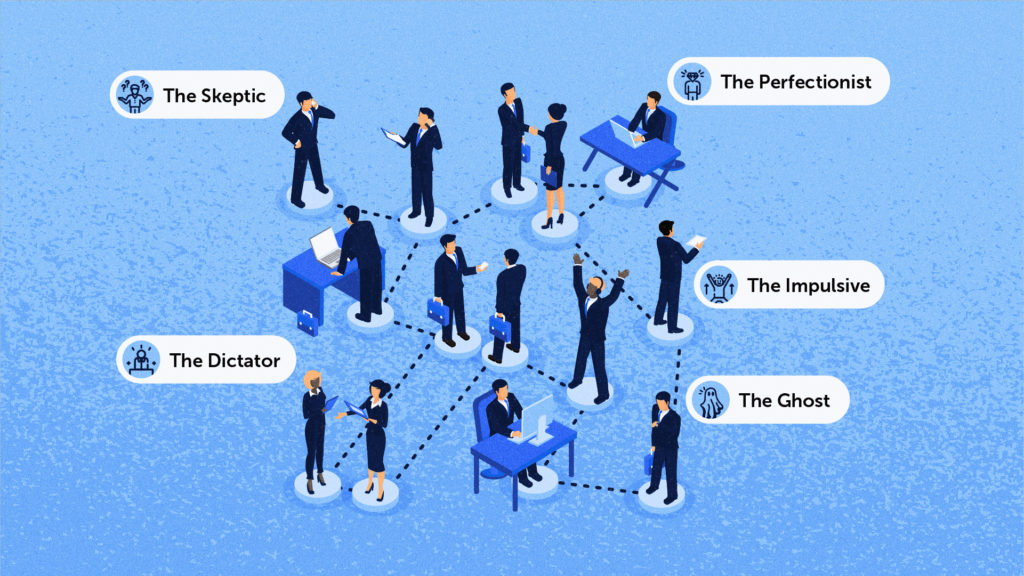We all love the exciting parts of CRO—big test wins, the tool stack, top certifications—the things we can control. But nobody wants to address the elephant in the room—the stakeholder who slows down progress or blocks success.
After leading over 20 CRO programs, I’ve learned that the difference between those that produce stellar results and those that fall apart often comes down to managing difficult stakeholders. You know the ones—skipping tests or pushing only their own ideas.
Success in CRO isn’t just about data and testing, it’s also about handling and persuading tough stakeholders. By understanding their motivations and easing their concerns, you can turn even the most challenging people into your strongest allies.
Deal with Difficult Stakeholders ASAP
Difficult stakeholders can derail your CRO program if not addressed quickly—especially those in decision-making roles. Their resistance slows progress and prevents them from exploring major opportunities.
Trust is everything in CRO, and once lost, it’s hard to win it back. Tackling stakeholder challenges early keeps your program on track and builds lasting trust. The sooner you get stakeholders on board, the smoother and more successful your CRO program will be.
The 8 Types of Difficult CRO Stakeholders (And How to Handle Them)
1. The Dictator
Typically in a leadership role, The Dictator dominates discussions and are often referred to as the “HiPPO” (Highest Paid Person’s Opinion), prioritizing their own ideas over testing insights or customer feedback. They can be well-meaning but often end up stifling innovation by believing their opinion outweighs any data or input from the team.
Their motivation: Assert their authority and prove their decisions are right
Their fear: Appearing uninformed or losing influence
How to deal:
- Use ego to your advantage—create space for their ideas, even if you’re only testing them to fail. Present data as a way to prove they were right all along.
- Create a high-level leadership dashboard summarizing key metrics and progress, keeping them informed without overwhelming them with all the details.
- Make a decision tree that outlines potential outcomes based on various choices, allowing them to see how their ideas fit (or don’t fit) within a larger strategy.
2. The Skeptic
A little skepticism is healthy, but The Skeptic can take it to the extreme. They’re convinced they already know the customers and feel research is a waste of time. They probably got burned by a failed test and haven’t recovered.
Their motivation: Ensure that decisions are based on what they perceive as tried-and-true knowledge rather than unproven theories
Their fear: Failure
How to deal:
- Emphasize that skepticism is actually a strength in CRO.
- Encourage them to trust the process by showing them past wins and helping them see testing as an iterative process.
- Conduct retrospectives/post-mortems and involve them in the testing process to build trust.
3. The Pixel Perfectionist
The Pixel Perfectionist is obsessed with prioritizing brand standards over learnings, often getting caught up in minor design details that can derail progress.
Their motivation: Ensure that every design decision reflects the brand’s identity and reputation
Their fear: Deviating from established visual norms
How to deal:
- Acknowledge their commitment to brand consistency, but emphasize the importance of “validation over perfection.”
- Stress that it’s crucial to discover what works quickly to avoid wasting time and resources on designs that may not succeed.
- Remind them that testing is an iterative process—there will always be opportunities to refine and perfect the design later based on data-driven insights.
- Show them examples of tests where less-than-perfect designs still led to significant improvements.
4. The Micromanager
They want control over everything—running the test, interpreting the data, and tweaking the hypothesis. They can’t help but hover.
Their motivation: Maintain a sense of authority and ensure that everything aligns with their vision
Their fear: Failure or a lack of trust in others’ capabilities
How to deal:
- Over-communicate. Keep them in the loop at every stage of the process to build trust and reduce their need to interfere.
- Share detailed reports or dashboards to satisfy their need for involvement without letting them take over.
- Assign them small, manageable tasks to direct their energy constructively.
5. The Ghost
Slow to respond, missing in action, and overall hard to reach. The Ghost is the stakeholder who takes forever to review or approve things, stalling your progress.
Their motivation: Focus on their own priorities or avoid confrontation and decision-making pressure
Their fear: Letting competing priorities slide or taking accountability for the wrong decision
How to deal:
- Emphasize the cost of delays. Frame it in terms of lost opportunities and potential revenue for them—suddenly, they’ll find the time to get back to you.
- Identify an alternative approver who can step in if The Ghost is unavailable.
6. The Cheapskate
The Cheapskate will cut corners on research and testing, and only care when you’re “winning.” They skimp on investments in necessary research or resources, preferring quick fixes that deliver immediate results instead of long-term strategies that create lasting impact.
Their motivation: Maximize profits while keeping expenses as low as possible
Their fear: Wasting money on initiatives that don’t deliver immediate returns
How to deal:
- Speak their language—ROI. Show them how investing in research and thorough testing can save money in the long run with stories from past experience.
- Point to cases where skipping research led to costly mistakes.
- Outline a budget that demonstrates how each expenditure directly contributes to the project’s success, helping them see the benefits of spending.
7. The Impulsive Implementer
The Impulsive Implementer thrives on quick decisions and immediate results, often pushing to skip the testing phase in favor of rapid implementation. Their impatience can lead to rushed choices and ending tests early, making it hard to gather accurate data and insights.
Their motivation: Deliver fast results and demonstrate quick wins
Their fear: Not delivering fast enough, falling behind, or missing out on opportunities
How to deal:
- Introduce the concept of ‘JDIs’ (Just Do It tasks), low-risk implementations that can be executed quickly without sacrificing the overall testing process, satisfying their need for speed.
- Clearly explain the risks of skipping the testing phase with examples that illustrate how hasty decisions led to costly mistakes.
8. The Big Swinger
The Big Swinger only cares about disruptive, game-changing ideas. They dismiss small, incremental improvements as unworthy of attention.
Their motivation: Look like a badass who makes big things happen
Their fear: Insignificant results or maintaining the status quo
How to deal:
- Show appreciation for their ambition, validating their desire for change.
- Present a CRO roadmap that includes both disruptive ideas and smaller incremental tests, emphasizing how the latter can support the former at a faster pace and with less effort.
- Share examples of organizations that successfully integrated both radical and incremental changes, illustrating how each can contribute to overall success.
Key Takeaways (You’ve Got This!)
Dealing with tough stakeholders is part of the game in CRO. The key to managing them is much like converting site visitors: understand their motivations, ease their anxiety, and communicate in a way that resonates with them.
It takes time to master persuasion, but with practice, you’ll find that even the most resistant stakeholder can become your program’s #1 ally. Just remember: we’re not saving lives here—so keep it fun and keep learning!
Are there any difficult stakeholders you would add to this list?


